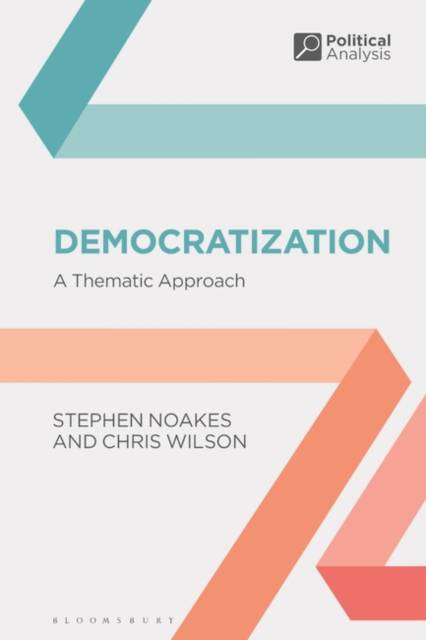
- Afhalen na 1 uur in een winkel met voorraad
- Gratis thuislevering in België vanaf € 30
- Ruim aanbod met 7 miljoen producten
- Afhalen na 1 uur in een winkel met voorraad
- Gratis thuislevering in België vanaf € 30
- Ruim aanbod met 7 miljoen producten
Zoeken
Omschrijving
Compare any two political maps, one from the early twentieth century and one from the present, and you will notice that the world now contains more democracies than it used to.
How and why did democracy spread around the world? How do we recognize democracies when we see them? And what does the future of democracy look like?
This book shows you how to define and measure democracy, and to identify what democracies have in common. It evaluates important recent trends in democratization and the challenges that face it including:
- Democratic decay
- Populism, authoritarianism and the far right
- Threats posed by global terrorism and sectarian violence
- The rise of 'illiberal democracies'
- Declining civic participation.
Analysing economic development, education, industrialization and other factors, Democratization shows you the internal political, economic and social conditions that help or hinder democratization. Looking at globalization, political aid, military intervention and the 'neighbourhood'-effect, it also explains how external factors put pressure on democratic reform.
Covering key theories, such as modernization and democratic peace theory, and with case studies from Indonesia to the Zapatista movement, this is the ideal text for those studying democratization for the first time.
How and why did democracy spread around the world? How do we recognize democracies when we see them? And what does the future of democracy look like?
This book shows you how to define and measure democracy, and to identify what democracies have in common. It evaluates important recent trends in democratization and the challenges that face it including:
- Democratic decay
- Populism, authoritarianism and the far right
- Threats posed by global terrorism and sectarian violence
- The rise of 'illiberal democracies'
- Declining civic participation.
Analysing economic development, education, industrialization and other factors, Democratization shows you the internal political, economic and social conditions that help or hinder democratization. Looking at globalization, political aid, military intervention and the 'neighbourhood'-effect, it also explains how external factors put pressure on democratic reform.
Covering key theories, such as modernization and democratic peace theory, and with case studies from Indonesia to the Zapatista movement, this is the ideal text for those studying democratization for the first time.
Specificaties
Betrokkenen
- Auteur(s):
- Uitgeverij:
Inhoud
- Aantal bladzijden:
- 264
- Taal:
- Engels
- Reeks:
Eigenschappen
- Productcode (EAN):
- 9781350328341
- Verschijningsdatum:
- 9/02/2023
- Uitvoering:
- Hardcover
- Formaat:
- Genaaid
- Afmetingen:
- 156 mm x 234 mm
- Gewicht:
- 539 g

Alleen bij Standaard Boekhandel
+ 440 punten op je klantenkaart van Standaard Boekhandel
Beoordelingen
We publiceren alleen reviews die voldoen aan de voorwaarden voor reviews. Bekijk onze voorwaarden voor reviews.








